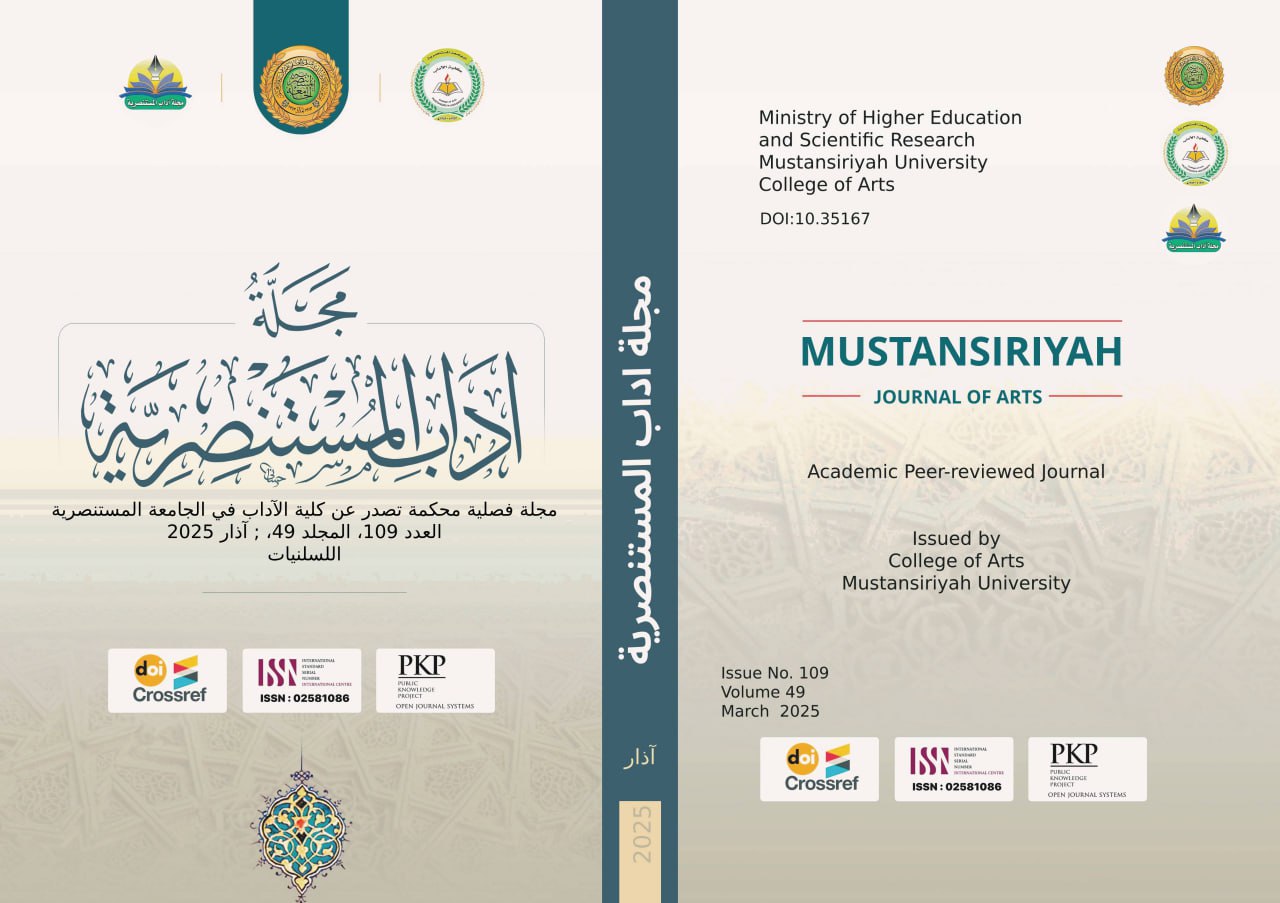Abstract
This research examines how poets in classical Arabic poetry employed and formulated literary phenomena in their works. The formulation refers to the poet's use of language and their study of literary techniques. Through poetry, a poet conveys emotions, thoughts, sensations, and meanings in an appealing way by utilizing aesthetic phenomena like rhetorical devices, elaborate metaphors, artistic styles, rhythmic formulation, and the structure and essence of meaning. The poet’s task is to inject poetic soul into the artistic structure, elevating a text from ordinary language to a poetic language that touches the soul, addressing the mind and emotions. Furthermore, it addresses the formulation of artistic content within the structure of the Arabic poem, focusing on how the poet manages the general structure, from the introduction, purpose, and conclusion. The pre-Islamic poet's attention to the beauty of rhetorical devices and intricate metaphors, which are unique and irreplaceable, aims not only to enhance beauty but also to show the coherence and strength of the composition, the relationship between words, and their harmony with the meaning, all without pretension or excessive effort. Additionally, this formulation resonates with the audience, who finds it enjoyable. In contrast, Abbasid poets’ use of rhetorical devices, parallelism, and wordplay was often exaggerated and intellectual, which led to diverse critical responses—some admired and praised the poet, while others rejected their style. This variation can be attributed to the artistic formulation by the poets. Our study adopts a descriptive-analytical approach to investigate the formulation of literary phenomena and reveal their aesthetic qualities.
Keywords
Formulation
Intricate Metaphors ،Old similes
Literary Phenomena
rhetoric
Abstract
يتناول هذا البحث دراسة لكيفية توظيف الشعراء للظواهر الأدبية في أشعارهم وصياغتها لأنَّ الصياغة هي ما تعتمد على كيفية توظيف الشاعر لــــلغة ودراسته للأساليب الأدبية فمن خلال الشعر يمكن إيصال مشاعرهِ وما يختلج في نفسه من أفكار وأحاسيس ومعانٍ بصورة جذابة عبر توظيف الظواهر الجمالية كالبديع والتشبيهات العقيمة، والأساليب الفنية للصياغة الإيقاعية وبنية المعنى ومعنى المعنى فمهمة الشاعر ضخ الروح الشعرية في البناء الفني لينهض بنصه من نصٍ بلغة عادية إلى نص جمالي بلغة شعرية تمس الروح وتخاطب الفكر والوجدان؛ فضلاً عن صياغة المضامين الفنية لهيكلية القصيدة العربية التي تتم من خلال كيفية إدارتهم للبناء العام للقصيدة من صياغة المقدمة، والغرض، والخاتمة ؛ فاهتمام الشاعر القديم بتوظيف جمالية البديع وجماليات التشبيهات العقيمة التي لا تنتج مرة أخرى ليوضح للقارئ _فضلاً عن الجمالية_ متانة السبك والتلاحم في بناء الألفاظ وعلاقتها في التراكيب مع تجانسها للمعنى بدون تكلف وعناء وجهد وشحذ القريحة، فضلاً عن ذلك تجمع باستساغة المتلقي لها واستمتاعه بها على عكس توظيف شعراء العصر العباسي للبديع والسجع والجناس وغيره جاء بصورة مبالغة ويتحلى بالنزعة العقلية مما جعل النقاد يتباينون في موقفهم فمنهم من أعجب وأشاد بالقائل ومنهم من رفض ووقف ضدة؛ وهذا كلّه يرجع إلى كيفية الصياغة الفنية من قبل الشعراء؛ وقد أتبعنا في بحثنا المنهج الوصفي التحليلي لدراسة صياغة الظواهر الأدبية وكشف جمالياتها.
Keywords
الصياغة ، الظواهر الأدبية، الظواهر النقدية ، البديع، التشبيهات العقيمة.
